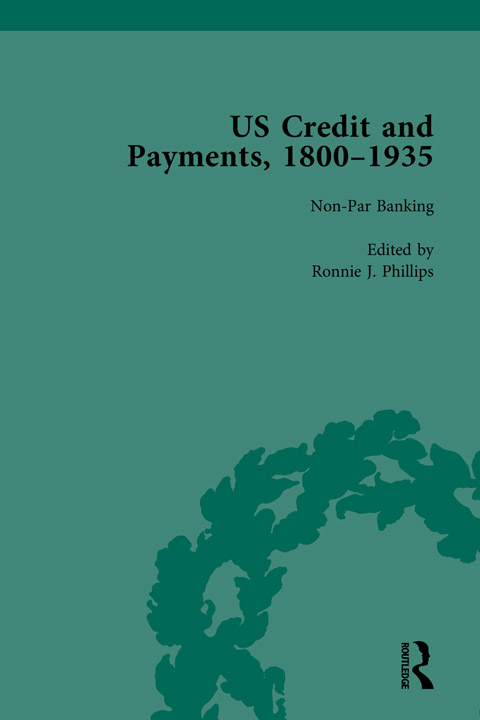Access to the full content is only available to members of institutions that have purchased access. If you belong to such an institution, please log in or find out more about how to order.
Loading content
We were unable to load the content

US Credit and Payments, 1800–1935, Part II
- Edited by
- Ronnie J. Phillips
- Published: 2013
- DOI: 10.4324/9781848932951
- Set ISBN: 9781848932951
Set Contents
Volumes 4, 5 and 6 of this series focus on three interrelated aspects of the payments system: the domestic exchange markets, exchange or remittance charges for clearing of banknotes, drafts and cheques (referred to as non-par banking), and the evolution of central banking in the US. These are institutions whose function and operation were integral parts of the US payments system for more than a century but today are known only to financial historians. The purpose of these three volumes is to provide a foundation for understanding the historical place of these institutions and how they can provide insight into the respective roles of the government and the private sector in the future evolution of the payments system in the US and elsewhere.
As it developed in common law in the US, a bank’s notes, drafts or cheques were payable at face or par value in legal tender or lawful money only when presented at the bank of issue. The recipient of a banknote, draft or cheque not presented at the bank of issue was usually expected to pay the cost of settling the payment in lawful money. The practice of charging a remittance fee to clear banknotes, drafts or cheques that were not drawn on the receiving bank is called non-par banking. Such fees for payment services have a long history in the US financial system. The unique structure of banking in the US, as discussed in the general introduction to this collection in Volume 1 and the introduction to Volume 4 on the domestic exchanges, accounted for the existence of these fees. Given neither a permanent central bank nor a common currency, state chartering of banks that were geographically restricted to one location resulted in thousands of small banks scattered throughout the US. However, as the US grew, interregional trade expanded and this necessitated the settlement of payments between different cities and different regions. The clearing house system, the subject of Volume 6, arose to facilitate the clearing of the intercity and eventually interregional payments.
The focus of this volume is on the development of central banking in the US under the National Banking System (NBS) from 1863 until the creation of the Federal Reserve half a century later. The NBS was important because it created a long-lasting Federal bank chartering and regulating agency, the Office of the Comptroller of the Currency (OCC), and also pioneered the backing of paper currency by Federal government debt as a means to provide a common currency throughout the country that would exchange at its par value. At the same time, the private sector creation of clearing houses was allowed to flourish in order to improve the efficiency of clearing bank drafts and cheques and to aid in periods of panic and financial crisis.